Reforestation breathes fresh air into efforts against climate change
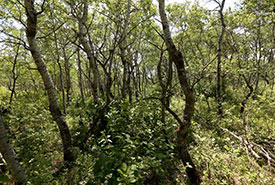
Forests are a vital part of our fight against climate change. (Photo by NCC)
When you think of Saskatchewan, your first thoughts probably go to flat cropland, rolling grasslands, sunsets and open horizons — and not forests. In reality, our prairie province is actually more than 50 per cent forested. In fact, boreal...
Ain’t no mountain high enough

Hikers in Happy Valley Forest, ON (Photo by NCC)
So, you’re the master of hiking up hills in the Greater Toronto Area, are you? You take the stairs over the escalator at the shopping mall. You’ve conquered the stair climber at your local gym. Perhaps you’ve even climbed the CN...
NCC staff tips for exploring nature this Canada Day
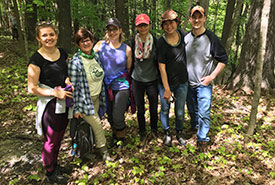
NCC National staff at MacMillan Nature Reserve, ON (Photo by NCC)
There’s nothing quite like hiking through a natural area and literally stopping to smell the roses. As Canadians, we’re so fortunate to have a backyard of diverse landscapes just waiting to be explored. This Canada Day, lace up your...
Tune in: Let the birds be your guide at Abraham Lake Nature Reserve

Abraham Lake, NS (Photo by Dan Hutt)
Jim Cameron describes Abraham Lake as a quiet oasis away from civilization. That is, until the silence on the trail that weaves through the property is interrupted by one of the area’s many winged residents. “Standing near the...
International Day of Biological Diversity: A thank you note to Algonquin Park
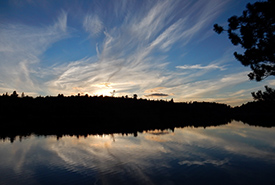
Joe Lake, Algonquin Provincial Park (Photo by Brett Hodnett/Wikimedia Commons)
Three. That’s how many Nature Conservancy of Canada (NCC) supporters recently (within the span of a week) shared with me that their current passion for nature and support for our work at NCC was sparked by spending time in Algonquin Park...
Success under pressure: Helping landowners succeed with stewardship in southwestern Ontario
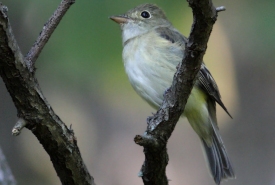
Acadian flycatcher (Photo by Bill Hubick)
The Carolinian ecoregion of Canada makes up one per cent of the country’s total land mass and is limited to southwestern Ontario. Many of the region’s 70 tree species — such as tuliptree, pawpaw and sycamore — are found...
Beech leaf disease: A new problem for Ontario trees

Early-stage leaf striping (Photo by John Pogacnik, Ohio Department of Natural Resources)
Beech bark disease began ravaging beech trees in Ontario in the late 1990s, after spreading west from Atlantic Canada. But recently, a new beech disease has emerged in the province. Beech leaf disease was first detected in North America in 2012 in...
Wrapping up the Natural Areas Conservation Program
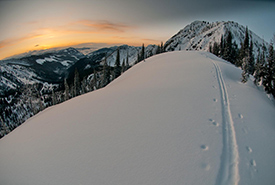
Darkwoods, BC in March (Photo by Bruce Kirkby)
When I started working for the Nature Conservancy of Canada (NCC) in early 2017, I was excited to be joining a tremendously successful conservation organization with a stellar track record of success. As someone who loves to spend time outdoors...
Conserving carbon sinks: A natural solution to climate change
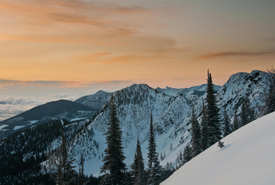
Darkwoods mountains, BC (Photo by Bruce Kirkby)
In the global effort to fight climate change, forests, wetlands and grasslands are more and more being recognized for their important role in absorbing greenhouse gas emissions (i.e., carbon dioxide) and storing carbon over the long term....
Slow down, and connect
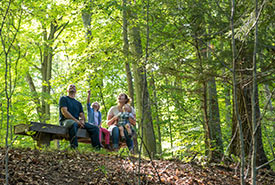
Colleen Dale believes the best way to educate Canada’s future conservationists is by taking them to explore her favourite place in nature: Ontario’s Backus Woods. (Photo by Neil Osbourne)
Ontario’s Backus Woods is a stellar example of one of Canada’s most diverse life zones. Growing up in a time without the internet, Colleen Dale learned about nature the old-fashioned way: getting out into it. “I can remember...

